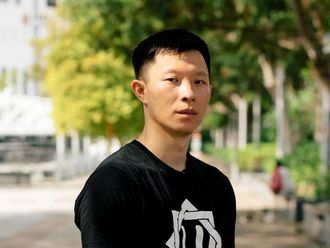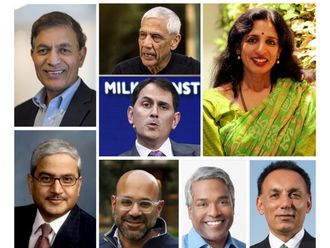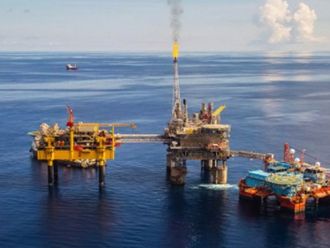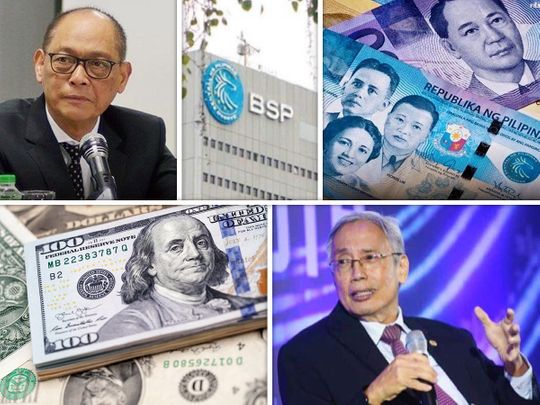
Highlights
- Creating a sovereign wealth fund (SWF) could significantly help transform the country economically.
- But it needs a strong "buy-in" from the people and their leaders, as well as clear rules to prevent abuse, misuse.
- Filipino lawmakers are currently debating a legislation to create the country’s first SWF, to be initially capitalised with $5 billion "seed".
- The plan fans hopes of a "breakout" nation, but others cite potential downside risks that need to be mitigated.
Manila: Filipino lawmakers seek to build the country’s first sovereign wealth fund (SWF) via a legislative act. Many welcomed the move. But it also drew fierce pushback, and scratching of old wounds.
Dubbed the “Maharlika Investment Fund” (MIF), or Maharlika Wealth Fund (MWF), the proposed bill creating the corporate entity to bankroll the fund will be debated as early as December 12. It has formidable backers.
Initially, the plan was to take a huge chunk of cash from the Government Service Insurance System (GSIS, a pension fund for state workers) and Social Security System (SSS, pension fund for private sector) to seed it.
Opposition from Filipino pensioners and their advocates was instant, and intense.
Here’s what we know so far about the proposed Philippine SWF:
What exactly is an SWF?
It is a state-owned money pool that invests for the nation and its people. By design, its assets are invested across various sectors and financial assets. Known as a “wealth fund,” it's surplus money earmarked to take advantage of market opportunities, and live off the windfall profits, thereby potentially keeping the fund in operation virtually in perpetuity.
The key objective: help drive the country's economic diversification strategy, while developing human capital to play an integral part in the nation's growth and prosperity.
Who are its owners and managers?
In theory, every citizen of the owner-state has a share in the wealth fund. While the state backs, owns, and guarantees the fund, it is managed and administered by investment professionals (i.e. “fund managers”), much like a private investment fund does.
Given the experience of dozens of SWFs, clear guidelines can be put in place to prevent abuses and avoid huge losses.
In sum: It is up to the Filipino people to decide how they want to build and run their collective wealth.
How big are SWFs?
The top 15 state-owned funds have total assets worth $9.245 trillion as of the end of 2021, according to Statista.
Why is it important to have a wealth fund?
It’s the most open secret of the global capitalist order. Many nations use it to their practical advantage to build collective wealth. As the assets are generally liquid, and due to its sheer size, a wealth fund can snap market opportunities when they come.
Example: In 2017, one report shows more than 25 out of 100 pesos earmarked in the national budget — equivalent to Php828.75 billion — was unspent.
In March 2022, Bureau of Treasury (BTr) data showed the government (then under President Rodrigo Duterte) disbursed a total of PhpP4.68 trillion in 2021, which was 10.6% higher year-on-year.
However, that was 1.30% lower compared to Php4.74 trillion that the state was slated to spend for the whole of 2021; an "underspending" of about Php60 billion ($1.08 billion).
Putting excess cash to more efficient use, however, needs a strong will and "buy-in" from leaders and citizens alike. Given its contentiousness, and scratching of olds wound amid talk of possible "pillage" of the state wealth fund, the buy-in is sorely lacking at the moment.
Do SWFs that invest in stocks lose money?
Yes. Short-term loses can occur, especially when invested in a highly volatile equities (stocks) market.
Given the experience of dozens of SWFs, clear guidelines can be put in place, and must be strictly adhered to, in order to prevent abuses and avoid huge losses.
A prop movie titled "Maharlika" based on the supposed World War II exploits of Ferdinand Marcos Sr. against the Japanese occupation of the Philippines was released in 1970 while he was president (1965-86).
What are the risks that SWFs face?
In general, there are high-risk, medium-risk and low-risk investments. Treasury bills, notes, and bonds are some of the safest investment assets in the world (i.e. guaranteed by issuing governments), and are considered low-risk.
Some high-risk investments may also offer high returns. Over the long-term, however, investing in "blue-chip" stocks, generally tends to lead to a bump the value of the amount invested.
Example 1: A fund that bought Apple shares on November 30, 2012 (at $20.90, post-stock split price), and sold it at $140.94 (as of December 7, 2022, post-stock-split price), would have earned a whopping 674% spike in value over a 10-year period.
Example 2: In 2008, investment guru Warren Buffet bought $230 million worth of shares in battery and electric vehicle BYD, which has grown to around $8 billion in market value as of September 2022, a 34-fold increase in value, according to the Economic Times.
The accountability framework for the SWF’s operations should be clearly defined in the relevant legislation, charter, other constitutive documents, or management agreement.
Can a fund be invested only in low-risk instruments?
Yes. A fund’s risk profile can be designed/decided upon by the owners — or its governing body. Guidelines set by the owners/regulators/enabling law fund can set its risk profile. In many countries, lawmakers have an oversight over their SWFs.
Among the low-risk investment tools include Treasury securities like:
• Treasury bills
• Treasury notes
• Treasury bonds
• Bonds issued by government agencies (which are generally guaranteed by the state).

By investing in low-risk instruments, an SWF's principal role is to accumulate wealth over time. The trillions of dollars owned by states/governments used to buy US Treasuries (T-bills) — one of the most secure investments in the world with practically no downside risk — is an example of how SWFs safely gain value over time.
Alternatively, an SWF may place a portion of its assets to invest in "growth" (i.e. risky) stocks.
When was the first SWF proposed in the Philippines?
In 2016, a Philippine-owned SWF was proposed via Senate Bill sponsored by former Senator Bam Aquino (Senate Bill 1212).
In 2018, Senator JV Ejercito, also proposed by the creation of a state wealth fund via SB 1764. The proposals, however, failed to get past the committee level at the Senate.
What are the upsides of having an SWF?
Potential benefits, based on the experience of other countries, include:
• Create value: Many states use their SWF as a vehicle to accrue profit for the benefit of the nation's economy and citizens.
• Take advantage of market opportunities: A fund is able to take advantage of both short and long-term investment opportunities — both in domestic and international markets.
• Stabilise economy, diversify income: An SWF can function as a “stabiliser”, helping the country's economy diversify its resources, and generate wealth.
• Protect future generations: This is a very important point. A country’s mineral resources, on which most SWFs are built, are finite resources, i.e. may be used up. Though the Philippines is highly mineralised, only a few people benefit from its mineral wealth (oil, gold, copper, nickel, manganese, etc). One day, these may run out. That would leave future generations with a wasteland. By putting today's mineral wealth revenues in an investment fund, the future generations of citizens may also benefit from it long after they're depleted.
As of November 22, 2022, the US Federal Reserve interest rate — a.k.a. “federal funds rate” or policy rate — is 3.75% to 4% per annum.
This level was hit following a fourth consecutive rate increase of 0.75% and the sixth rate hike this 2022.
That means, in theory, an investment of $1 billion with a 4% policy rate this year could generate a yield of $40 million per annum — or about Php2.784 billion — made in a virtually risk-free investment vehicle.
The US policy rate data, updated monthly, is available from July 1954 to October 2022.
What are the downsides?
• Management: Among the MIF doubters, this is the biggest issue. What checks-and-balance are in place to ensure it is being managed as envisioned? How do you ensure the promise of huge profits is not used as a smokescreen for plunder, leaving the people with a "budol" (swindle) operation? By putting fail-safe checks against abuse, initial misgivings may greatly help improve the fund's management.
• Volatility: Equities markets, by nature, are unpredictable/volatile; so returns on a particular investment can go up and down. Returns are not guaranteed. There will be periods when the fund's assets may go downhill.
• Forex effect: Foreign exchange rates can have a huge impact on SWFs.
What would been an 8-year presidency (2 terms, 4 years each) stretched out to 21 years, marked by 14 years of military rule, summary executions of perceived enemies and pillaging of public funds, mostly borrowed from international lenders.
Marcos Sr's rule ended in 1986 when he was deposed in a civilian-backed military coup led by fellow Ilocanos. The Swiss bankers eventually returned to Manila hundreds of millions of dollars linked to the Marcos family.
In May 2022, Filipinos overwhelmingly elected Marcos Jr president due to perceived excesses of oligarchs that emerged in the years after Marcos Sr was ousted.
Where does the Maharlika Investment Fund stand?
The proposed legislation (House Bill 6398) creating MIF (or Maharlika Wealth Fund, MWF) enjoys strong backing from the Philippine House of Representatives leaders.
On Thursday (December 1), the House's banking committee approved the bill. Lawmakers are now pushing to have the bill approved by December 12, amid fierce opposition, notably from pensioners.

Who will head the fund?
Under HB 6398, MIF will be organised as a government corporation. It will be led/headed by the sitting President (as head of state). This is one contentious issue.
The sooner a compromise is made and clarity is achieved to address concerns over transparency and independence of its management, the greater the potential benefit not only for the current generation of Filipinos, but moreso for the next.
Some critics claim this provision risks pilfirage or abuse at the very least, and running the fund to the ground at the very most. Last week, Bangko Sentral ng Pilipinas Governor Felipe Medalla raised concerns about the wealth fund plan, including over its governance and potential impact on the monetary authority's independence.
Government officials such as Finance Secretary Benjamin Diokno have, however, sought to allay these fears.
Further debate could help "refine" the proposal in order to become fully compliant with the Santiago Principles.
The board will also include two independent directors.
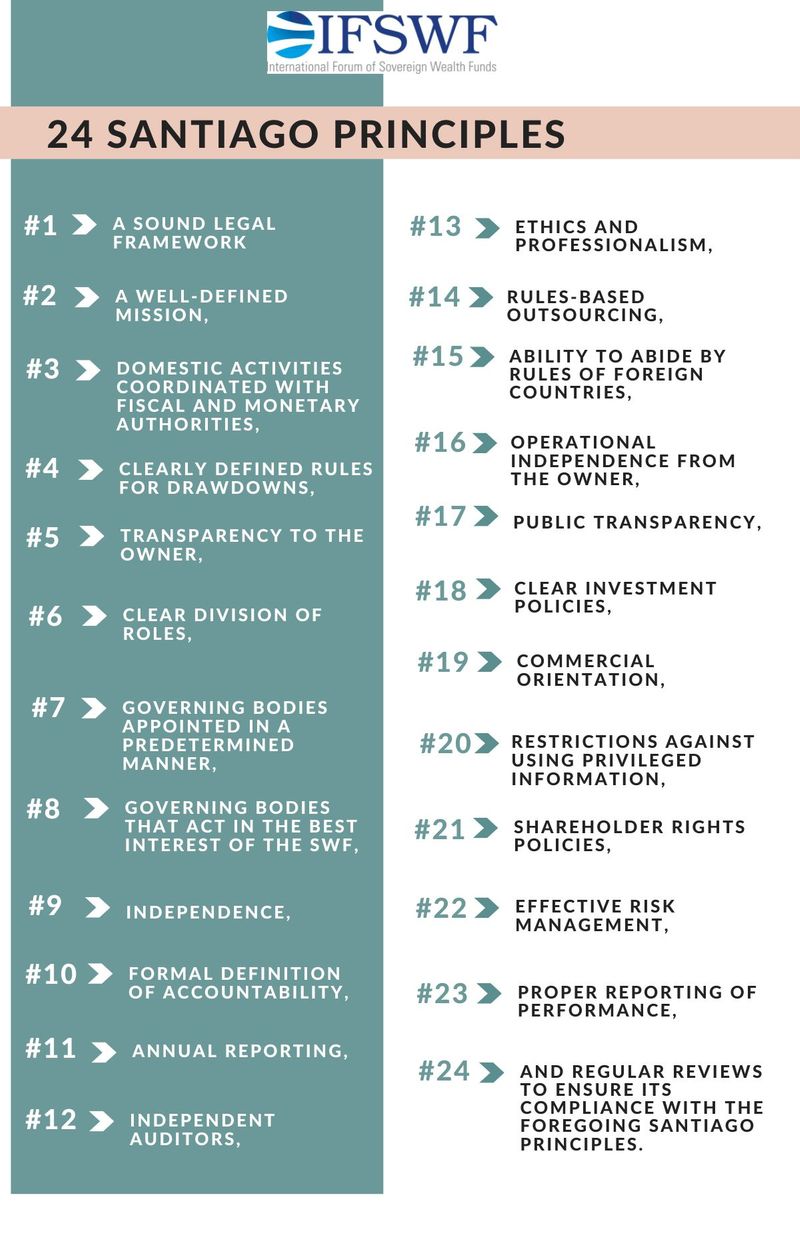
How much is the seed money for the SWF?
The proposed seed funding is Php275 billion (approximately $4.918 billion) fund — to which the Government Service Insurance System (GSIS), Social Security System (SSS), Development Bank of the Philippines, the Bangko Sentral ng Pilipinas (BSP), and Land Bank of the Philippines (LBP), Pagcor will contribute.
However, due to fierce opposition from pensioners, sourcing of seed money from GSIS and SSS was scrubbed. On Friday, Finance Secretary Diokno said that while the GSIS and SSS were no longer included in the list of funders, the two state pension funds can still invest in Maharlika should their respective boards decide to do so.
"We are not mandating them to contribute. But if they are looking for higher returns, they may contribute. That is up to the respective boards of the SSS and GSIS,” Diokno said.
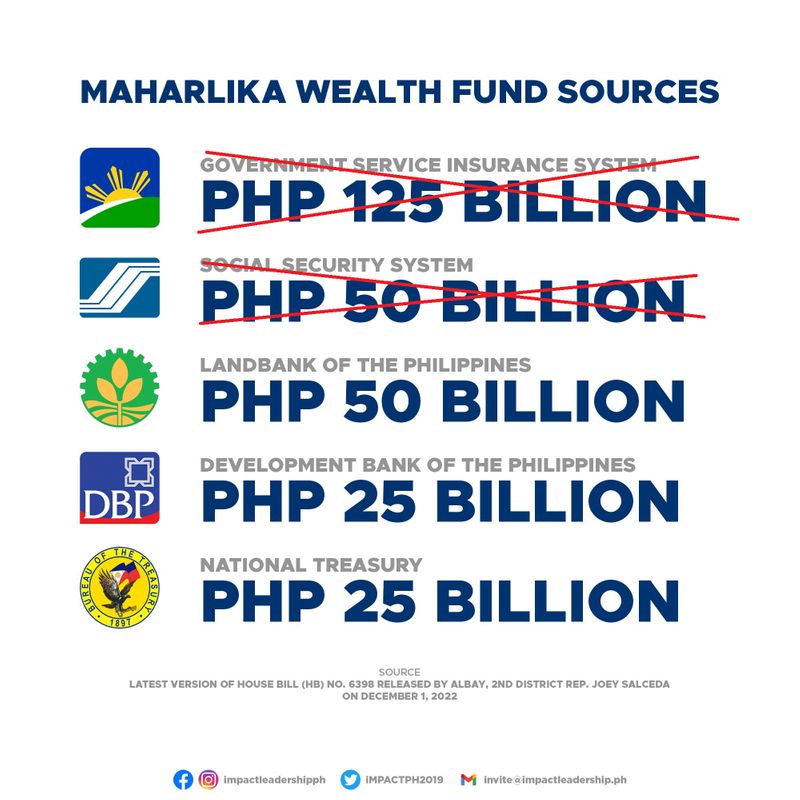
Instead of the cash from GSIS and SSS, profits from the country's central bank, the BSP, will be utilised, according to the updated proposal.
What about the country's mineral wealth?
This is an important question to ask. Mining laws exist in the Philippines, and the mining industry taxation is currently being re-examined. In general, tax from mining companies go to the general fund and get used up by items outlined in the annual budget (General Appropriations Act) every year.
In August, the House Ways and Means Committee approved a bill adopting a new mining excise tax regime. It seeks to rationalise and have a single fiscal regime applicable to all existing and prospective large-scale metallic mines, regardless of location.
In general, it would bring the country's effective tax rate on mining (considering all taxes) to 51 per cent, up from 38 per cent (current system). The bill proposes the imposition of a royalty tax of 5 per cent on the market value of gross output of large-scale mining operations.
If passed, the new mining tax regime is expected to generate Php37.5 billion (about $677.5 million) during its first full year of implementation. If collected over a ten-year period, it would bring in more than $6.7 billion in mining taxes alone.
Without the mining tax (or part of it) going to the country's wealth fund that can last in perpetuity, annual mining revenues would all be used up in a single budget year to fund the government's "priority programs".
In contrast, the Norwegian Oil Fund — recently renamed "Government Pension Fund-Global" — is often cited as an exemplary SWF, as it uses its oil revenues to build the fund under clearly-stated legislation.
It also states that a minimum government share of 60 per cent of net mining revenues, including all government taxes, fees, and charges, will be imposed on mining operations.
A 10-percent export tax will also be levied on the market value of mineral ore exports, to encourage domestic processing of mineral products.
Philippine mining exports value has been increasing, indicating that most exports are ores without domestic value-added.
To institutionalise transparency standards, the government will implement a mechanism for the public disclosure and scrutiny of all mining tax and revenue data in the extractives value chain.
Why does the Philippines want to have a SWF?
The Philippines is a late-comer to the SWF party. And the fact that the country's legislators and leaders are even talking about it is itself a sign of progress.
In general, the existence of a SWF helps build wealth — via one of the most efficient vehicles in the global capitalist order. If enough safeguards are in place to prevent abuse or misuse, the experience of many countries with SWFs can be an effective guide to build one in the Philippines going forward.
• Domestic and foreign corporate bonds,
• Fixed-income instruments (i.e. Treasury bills)
• Foreign currencies, metals, listed or unlisted equities
• Mutual and exchange-traded funds,
• Commercial estate and infrastructure projects.
How will the fund be safeguarded from abuse or misuse?
To ensure transparency and accountability, proponents say the MIF would adhere to the so-called "Santiago Principles" — which has 24 generally accepted principles and practices (GAPP) agreed to in October 2008 in Santiago, Chile, among countries with SWFs.
Though endorsed by members of the International Forum of Sovereign Wealth Fund (IFSWF), the Santiago Principles are "voluntary".
One key principle is the GAPP #10 Principle, which states: "The accountability framework for the SWF’s operations should be clearly defined in the relevant legislation, charter, other constitutive documents, or management agreement."
What's the way forward?
In sum: It is up to the Filipino people to decide how they want to build and run their collective wealth.
Nothing beats clarity and independence. If the fund is beholden to incumbent leaders, the risk of pilfirage is high, and oversight weak.
Whether or not this single point of the Santiago principle are clearly stated and adhered to under any legislation, it remains to be seen.
Potentially, the upper chamber (Senate) may resurrect a counterpart bill that could include provisions radically different from Lower House's.
So the day for a Philippine SWF is just dawning, with dark clouds overhead. But if a Philippine wealth fund does somehow see the light of a sunny day — with misgivings of doubters somehow salved — its existence could redefine the Asian country, and mark its coming-of-age economically.
The sooner a compromise is made and clarity is achieved to address concerns of transparency and independence of its management, the greater the potential benefit not only for the current generation of Filipinos, but moreso for the next.



